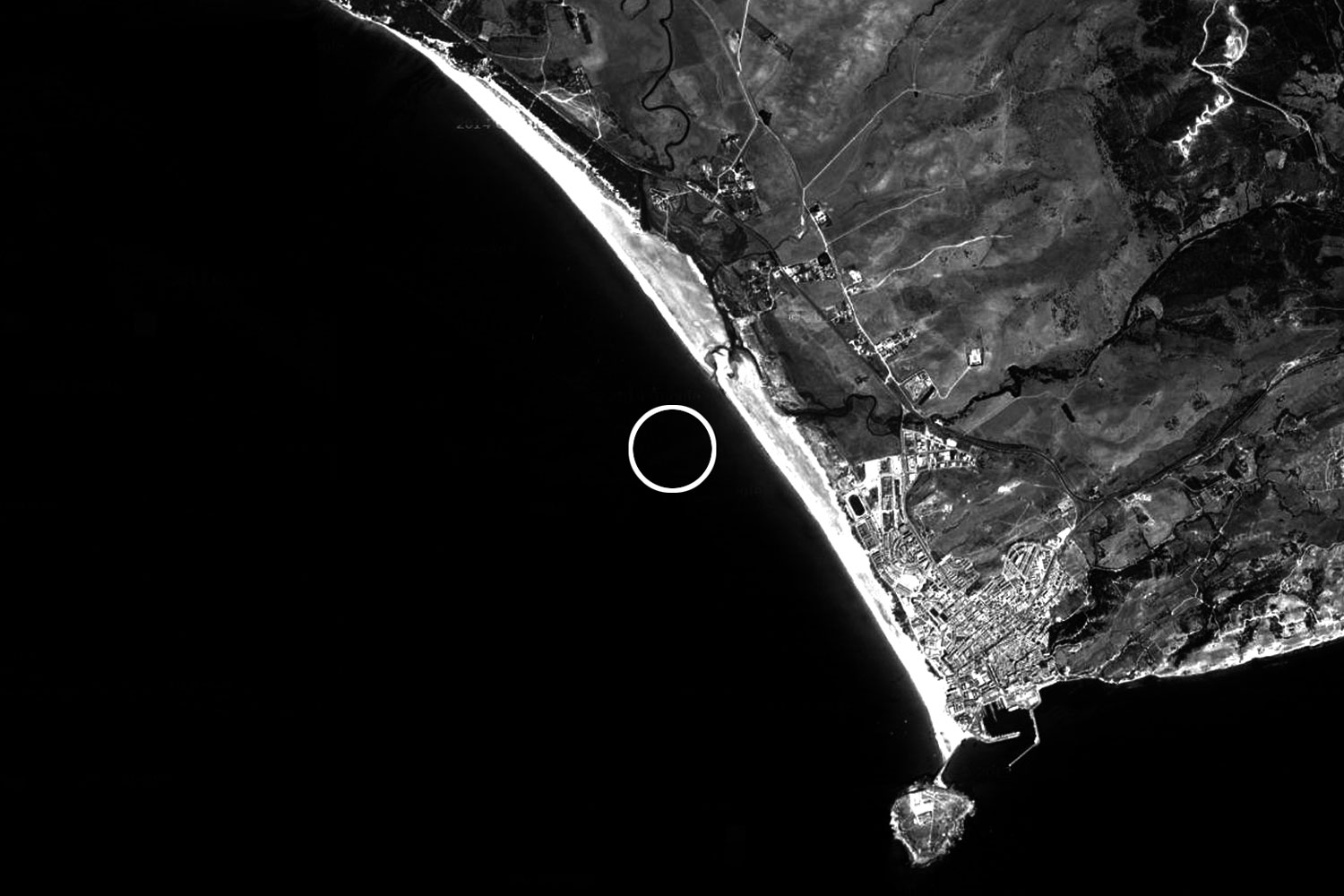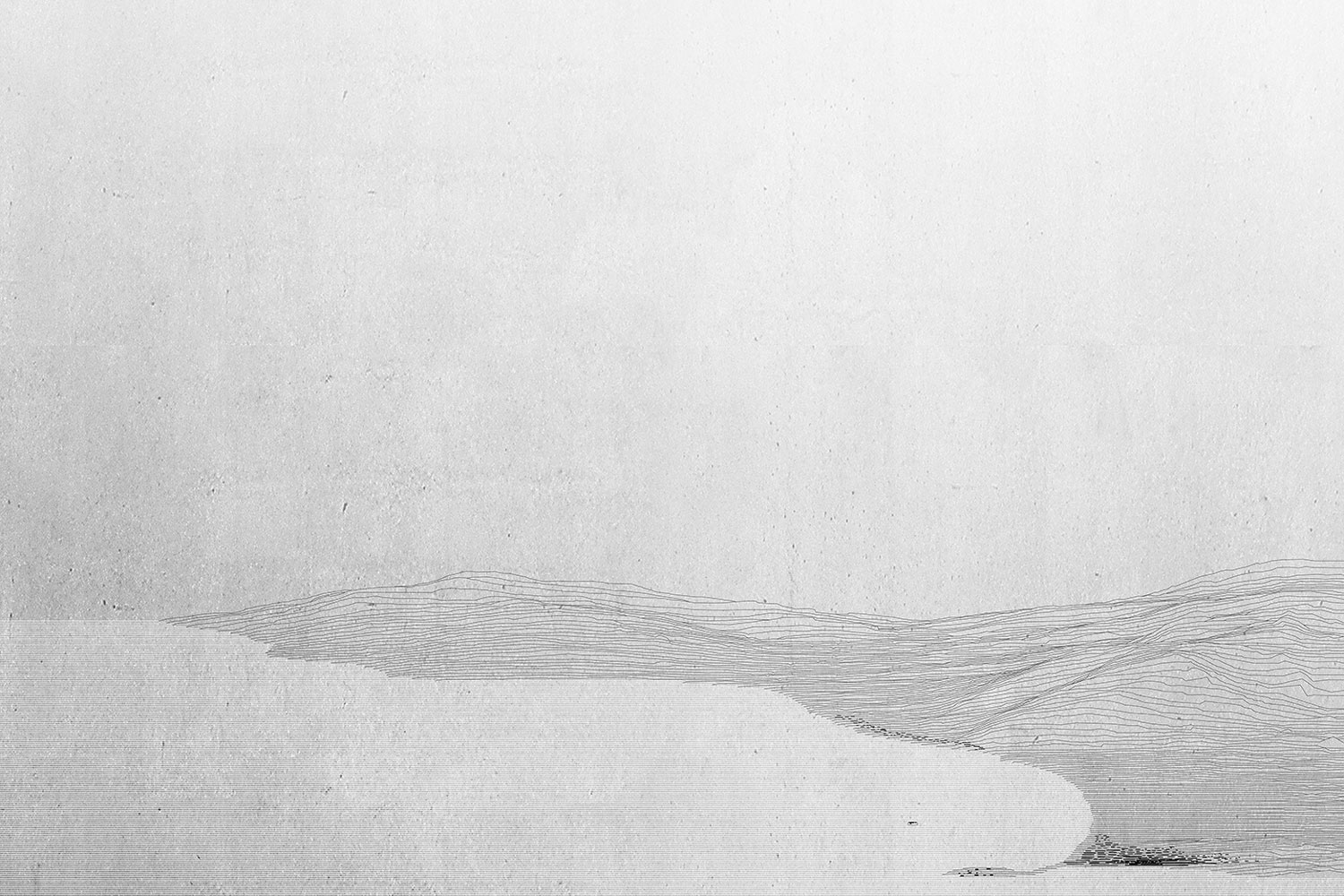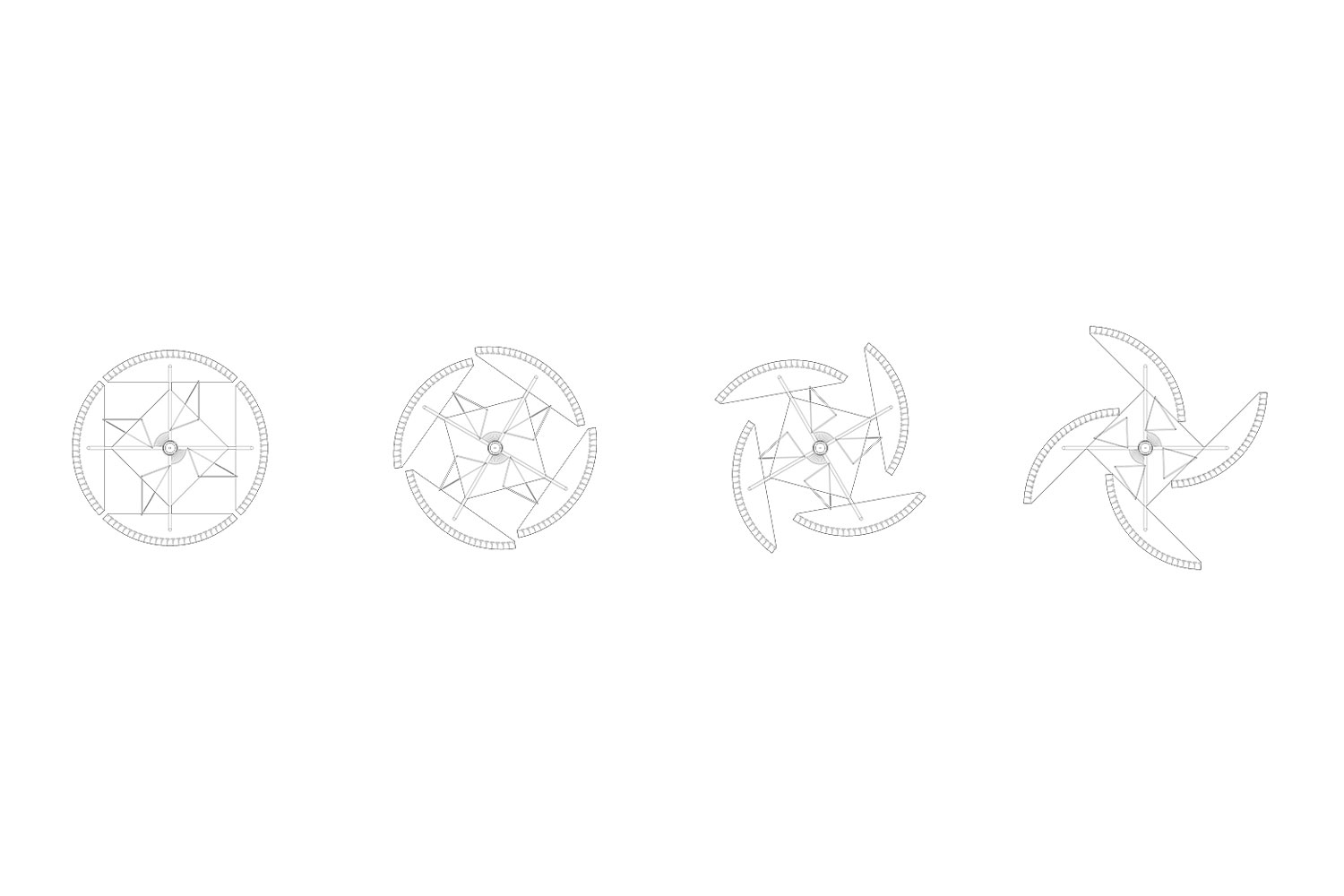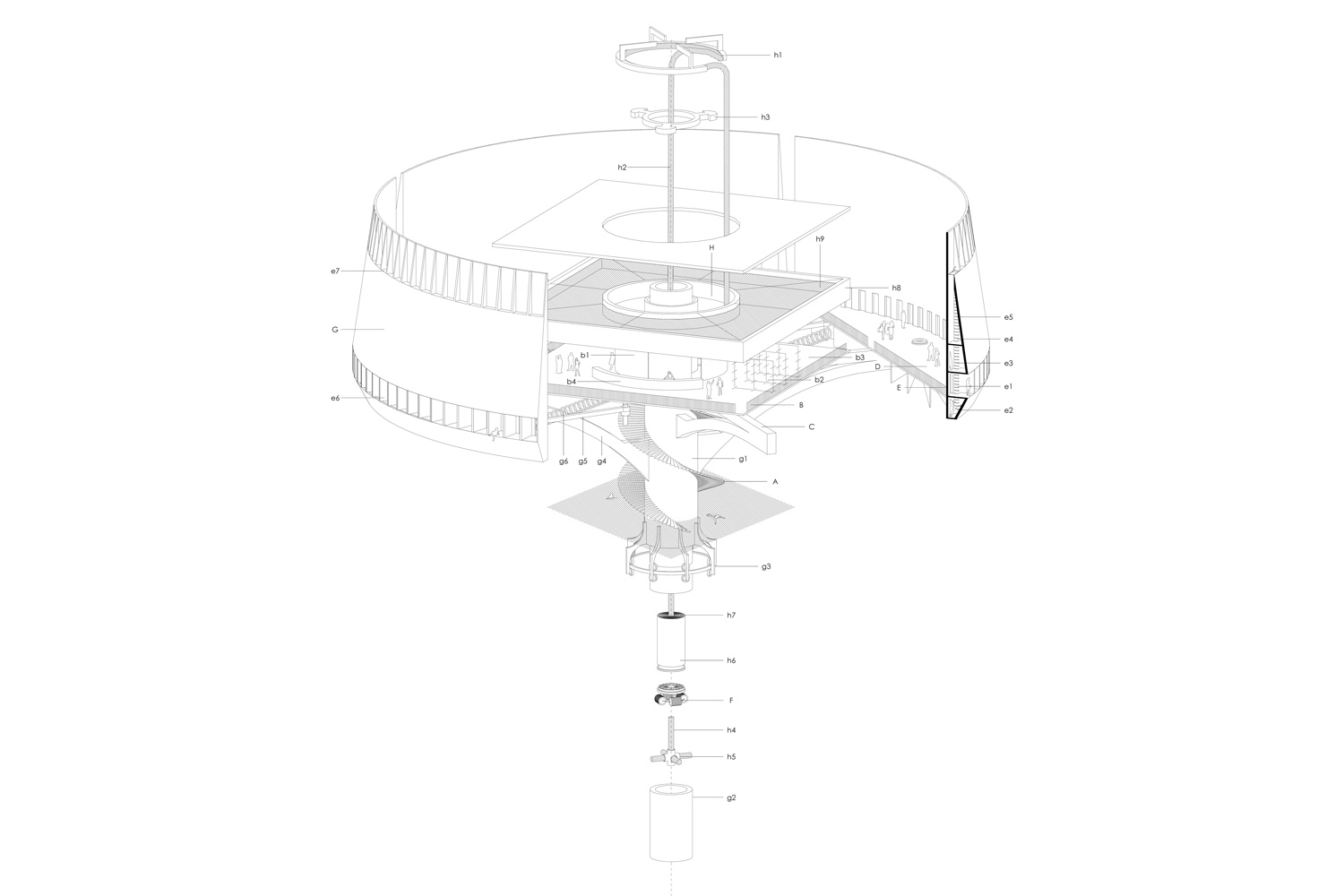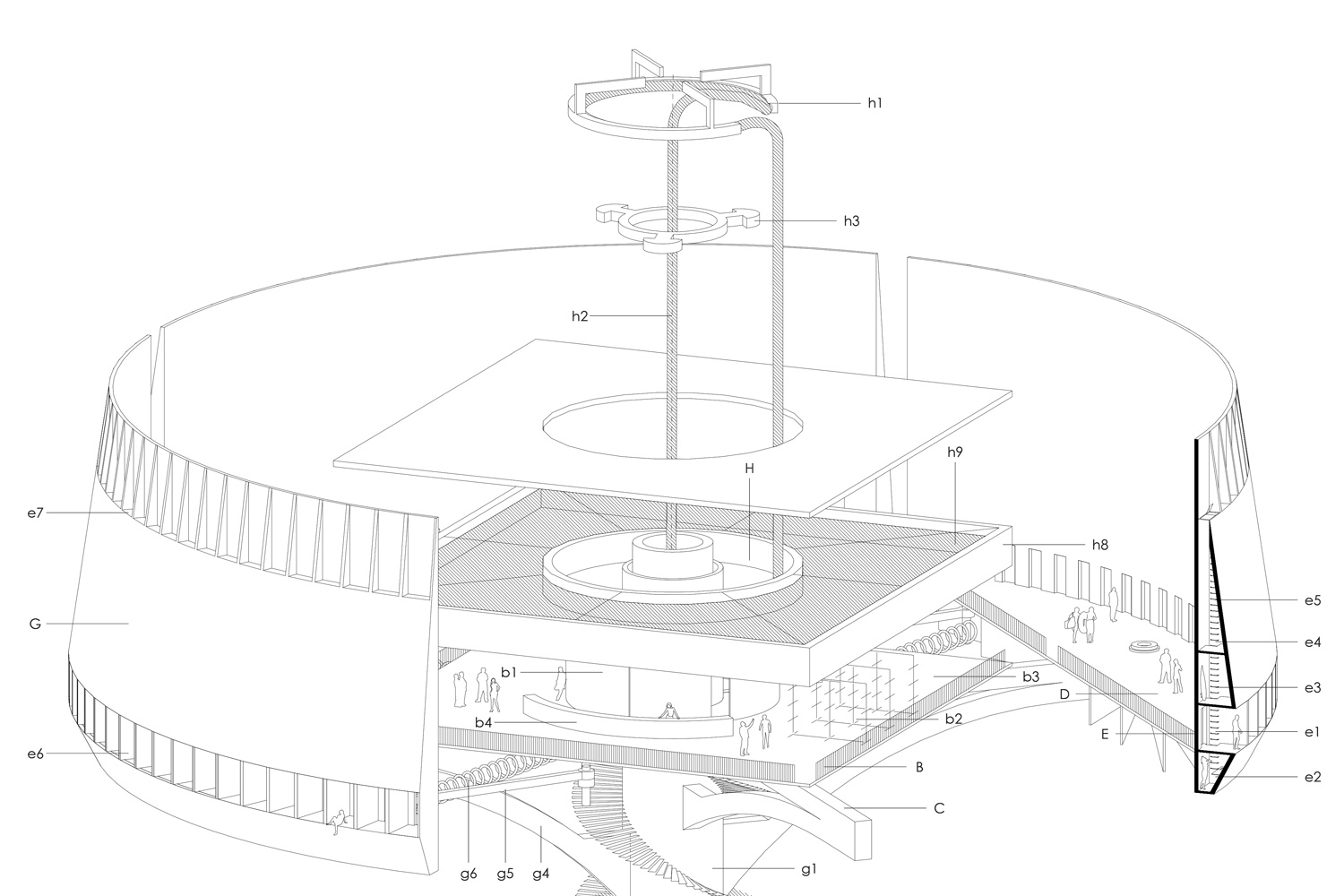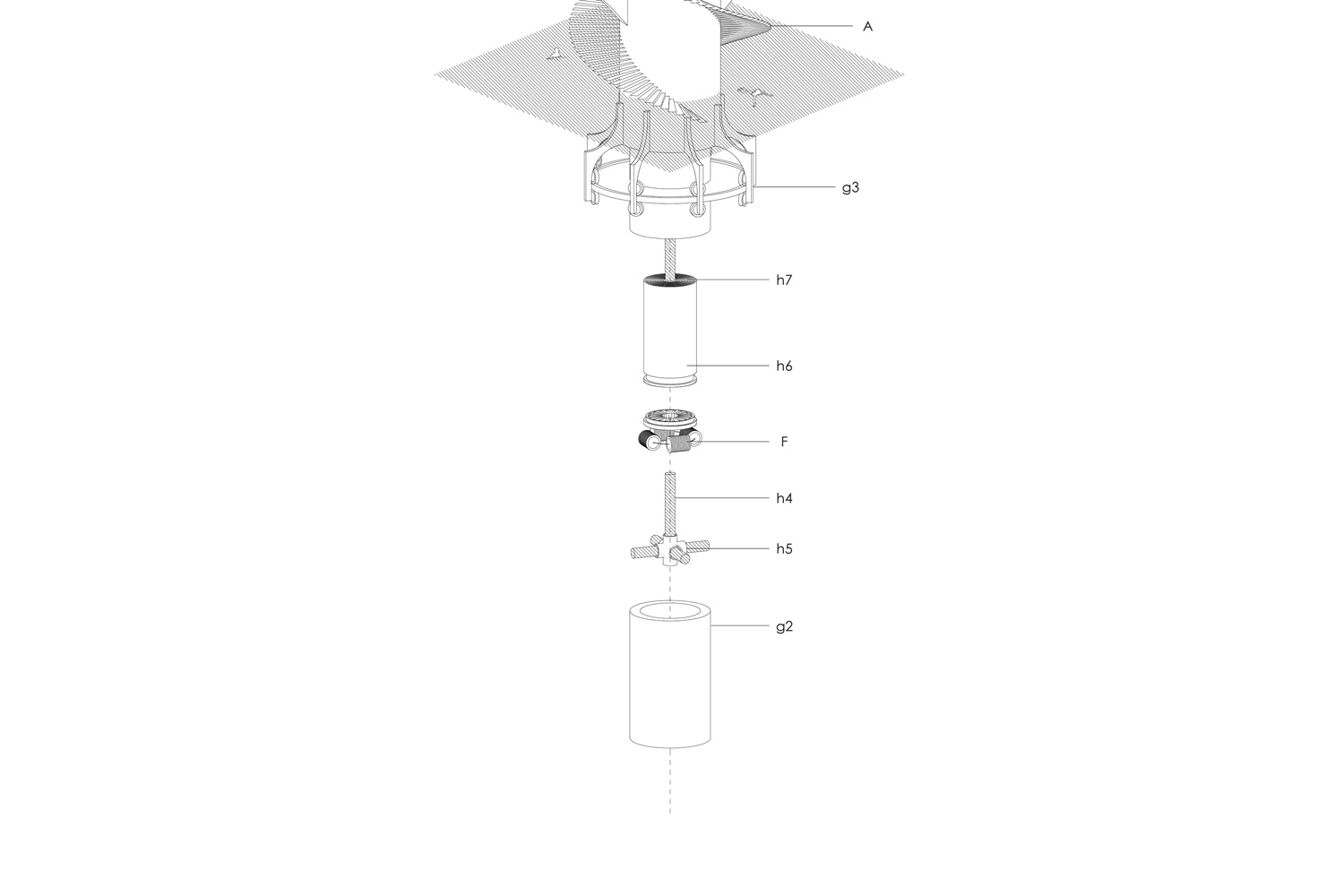☉ Temporary Housing for Surfers in Tarifa is a proposal by BAST for Rethinking Architecture Competitions in 2015. It is located in Tarifa Spain in a seaside setting. Its scale is small. Review the 3 proposals for the same competition.
Inhabited machine raising water by means of the wind.
A double helix A links the platform containing the servant spaces to the water’s surface B. This platform groups the common areas: a desalination vestibule b1, a drying area b2, a shared kitchen b3 and a static bar b4. Four arms acting as footbridges C connect the mobile terraces D giving access to the housing units E. Each unit is composed of four superimposed volumes: a living room e1 (6,4m3), a sanitation cabin e2 (3,2m3), a storage area e3 (6m3) and a sleeping area e4 (10m3). These volumes are linked by a continuous ladder e5 rising over 12,70m. The vertical opening e6 opens up on the landscape. The overhead opening e7 channels light throughout the height of the unit and fulfil the role of a natural ventilation chimney when it is open. The system as a whole is built on a tower which does not sit on foundations, but whose stability is guaranteed by the weight of the structure on the ocean floor, allowing for maximum reversibility. The tower includes four generators F, positioned radially around the mast, providing all the necessary electricity.
Specifications
Constant Velocity Vertical Axis Wind Turbine (CVVAWT)
Four blades G, with a diameter of 60m and a height of 18m, are powered by the wind. They pull the central hollow axis g1, which turns around the mast g2 on a circular bearing system g3. The blades automatically orient themselves into an optimal position according to the wind’s strength and transmit a constant speed to the axis by the intermediary of the crossed arms g4. The coupled asymmetrical reinforcements allow them to support the weight of blades without bowing. A system of connecting rods with articulated closings g5 coordinates the orientation of the blades. When a small breeze is blowing, the blades open to their widest extent. When the wind is blowing hard, they tend to close. The force applied to the axis is at it’s maximum when the blades are three quarters closed. If the wind becomes more powerful, the blades shut completely. As soon as the wind weakens the blades open under the influence of the springs g6. The unchanging speed helps to limit the forces applied to the wind turbine’s structure and avoids deformation.
Water Desalination System (WDS)
The rotational movement generated by the CVVAWT allows the raising of the water by means of a peristaltic pump H, which has a maximum flow of 50m3/h. The pump is comprised of a static belt h1, fixed to the mast, which accommodates a flexible tube h3. A rotor with three wheels h3 which compress the tube by rotating, alternately compress and depress the tube, causing the water to flow. It circulates within a closed circuit, avoiding contamination and wear to the pump. An adduction duct h4 in the mast is linked to a cross h5 at the base, allowing water to enter the pump mechanism. The duct is connected to an osmotic filter h6. The process consists in applying sufficient pressure to the salt water so as to force it to pass through a semi-permeable membrane h7 : the water molecules cross through the membrane, those of the salt are withheld. The obtained drinking water is channelled towards a 500m3 basin h8, which allows control and trans loading of the water. The compartmentalisation of the tank by siphons h9 allows the distribution of the water by acting as a plenum chamber. The water in the basin is kept at a temperature of 9º and does not increase above 15º at the tap. The water is then guided to a hydrostatic system which ensures it’s routing to the entirety of the units and their sanitation cabins. The height difference between the bottom of the basin and the sanitation cabins ensures an almost constant 2 bars of pressure within the system.
Climatic Device (CD)
The variation of the position of the blades regulates the climate at the center of the device. The central area is open on four sides when the wind is weak. It is completely closed on itself and protected when the wind is strong. It is an autonomous climatic environment where machine, architecture and climate are intrinsically linked. Through the natural force of the wind, the Aeropump Shelter taps into the water beneath it, filters it, stocks it and distributes it to all the 100 units which make up the blades that act as a contact area for the wind.
«The aspect of my machines, as a whole, is much appreciated by architects and landscape architects; they say that such an installation can only aid with the embellishment of a site. No part however, has been made especially to be beautiful, each has it’s use and is indispensable. » Auguste BOLLE, special construction of wind turbines patented S.G.D.G., 1885
